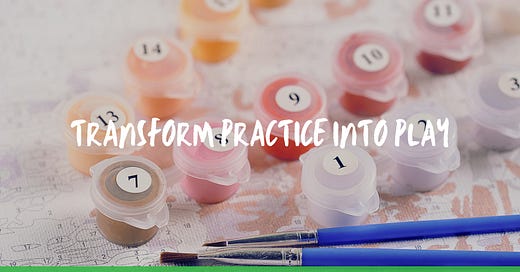As music teachers, we know that practice is essential for progress, but it can sometimes feel like a chore for young learners. I consistently seek ways to infuse fun and creativity into practice sessions. One of my favorite tools is color-by-number activities explicitly tailored for violin students.
What Are Practice Color-by-Number Activities?
These are activities where each color corresponds to a specific practice task. Students gradually fill in a picture with vibrant colors by completing the tasks. Not only do they develop their musical skills, but they also enjoy the satisfaction of watching their artwork come to life.
Here’s how it works:
1. Choose a Picture: Pick a color-by-number design that appeals to your student. It could be music-themed or something they love, like animals, seasonal scenes, or abstract patterns.
2. Assign Colors to Tasks: Each number on the sheet corresponds to a color, and each color is linked to a specific practice task. For example:
Red: Bow a song in the air to check for smooth, consistent bowing.
Blue: Play the first two lines of your piece with accurate intonation.
Green: Clap and count the rhythms of the trickiest measures.
Yellow: Play the entire piece pizzicato to focus on left-hand accuracy.
Purple: Perform with dynamics, emphasizing soft and loud sections.
Why It Works
This approach turns practice into a game, adding an element of surprise and accomplishment. It encourages:
Focused Repetition: Students approach each task with intention instead of mindless repetition.
Skill Development: The varied tasks help them tackle multiple aspects of their playing, from rhythm to bowing technique.
Motivation: Completing the picture provides a visual reward, keeping students engaged and excited.
Example in Action
Let’s say your student is working on "Allegro" from Suzuki Book 1.
Step 1: Hand them a simple color-by-number sheet. Today, I’m using an Asian princess design.
Step 2: Assign practice tasks. For instance:
Red (1): Bow the entire song in the air
Black (2): Play the whole piece, observing the fermata.
Peach (3): Play lines 1 and 2 two times each.
Blue (4): Bow distribution: play in the correct part of the bow.
Light Pink (5): Play line 3 three times.
Dark Green (6): Sing and clap the entire piece.
Hot Pink (7): Play piece; watch bow.
Light Green (8): Play line 3 only, observing the fermata.
Brown (9): Play piece, making sure all notes are in tune (on tapes)
Step 3: As they complete each task, they color in the corresponding areas of the star. By the end of their practice session, they will have improved their playing and created a colorful keepsake.
Tips for Success
Personalize It: Tailor tasks to each student’s current needs and goals.
Keep It Manageable: Avoid overwhelming students by breaking tasks into small, achievable steps.
Celebrate Completion: Once the picture is finished, celebrate their hard work with a sticker, a small treat, or simply words of praise.
Free Resources
coloritbynumbers.com has printable coloring activities for three difficulty levels, including designs featuring fairies, princesses, animals, dinosaurs, and flowers. You can also do the coloring activities online on-screen, which I’ll be doing today for lessons that moved to Zoom because of the winter weather. There are also tons of free printable, done-for-you color-by-number designs on Canva.
By incorporating creative activities like these, we can show our students that practice doesn’t have to be boring. It can be a fun, colorful adventure leading to musical and artistic growth. Give it a try, and let me know how it works for your studio!




